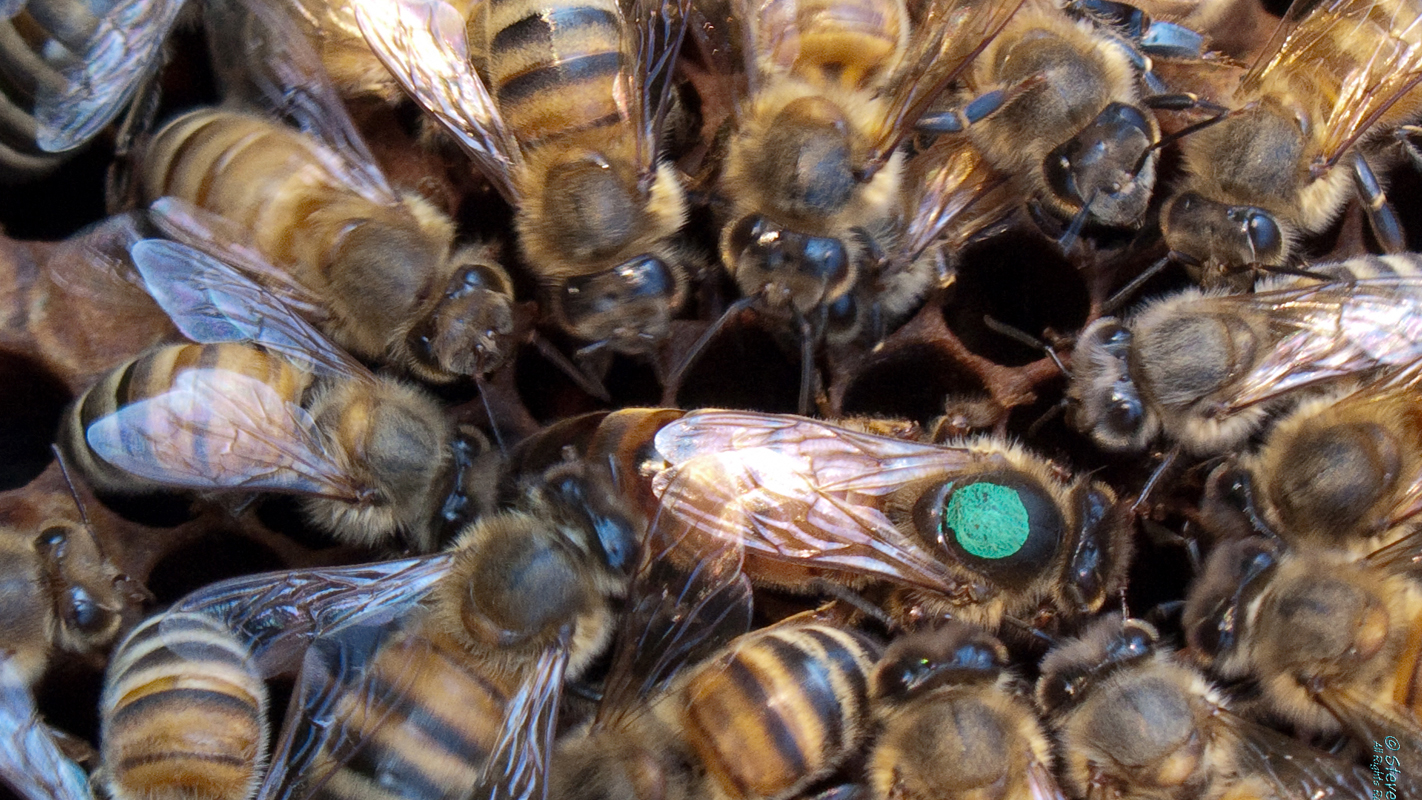The Environment May Change, but the Microbiome of Queen Bees Does Not

For Immediate Release
Researchers from North Carolina State University, Indiana University and Wellesley College have characterized the gut microbiome of honey bee queens. This is the first thorough census of the gut microbiome – which consists of all the microorganisms that live in the gut of the organism – in queen bees.
“We found that the microbiome changes as the queen matures, but the microbiomes of different queens are very similar – regardless of the environment each queen is in,” says Dr. David Tarpy, a professor of entomology at NC State and co-author of a paper describing the work.
The research evaluated the gut fauna found in honey bee (Apis mellifera) queens at every point in their development, from the larval stage through their emergence as adults capable of reproduction. The researchers also assessed the gut microbiome of worker bees in each queen’s colony to see if there was any relationship between the microbiome of the workers and the microbiome of the queens. The study found that a queen’s microbiome does not change when placed in a new colony – and the colony’s microbiome doesn’t change either.
“There are large, commercial operations that produce thousands of queens each year for sale to professional and amateur beekeepers,” Tarpy says. “Up until now, nobody has really asked whether a queen’s microbiome changes when the queen is introduced into a new environment.
“It doesn’t – and that’s a good thing. Our findings tell us that beekeepers who replace their queens aren’t disrupting the microbiome of either the queen or the colony.”
The finding also opens the door to new areas of study – such as whether a queen’s microbiome could be manipulated to improve her health or reproductive success.
“Now that we know placing a queen in a new colony doesn’t change her microbiome, it makes sense to see if there is anything we can do to the microbiome to improve the queen’s chances of success,” says Dr. Heather Mattila, Knafel Assistant Professor of Natural Sciences at Wellesley College and a co-author of the paper.
The paper, “Characterization of the Honey Bee Microbiome Throughout the Queen-Rearing Process,” is published online in the journal Applied and Environmental Microbiology. The paper was also co-authored by Dr. Irene Newton of Indiana. The research was supported by a grant from the National Honey Board.
-shipman-
Note to Editors: The study abstract follows.
“Characterization of the Honey Bee Microbiome Throughout the Queen-Rearing Process”
Authors: David R. Tarpy, North Carolina State University; Heather R. Mattila, Wellesley College; and Irene L.G. Newton, Indiana University
Published: Feb. 27, Applied Environmental and Microbiology
DOI: 10.1128/AEM.00307-15
Abstract: The European honey bee (Apis mellifera) is used extensively to produce hive products and for crop pollination, but pervasive concerns about colony health and population decline have sparked an interest in the microbial communities that are associated with these important insects. Currently, only the microbiome of workers has been characterized, while little to nothing is known about the bacterial communities that are associated with queens, even though their health and proper function is central to colony productivity. Here, we provide a large-scale analysis of the gut microbiome of honey bee queens, during their developmental trajectory and through the multiple colonies that host them as part of modern queen-rearing practices. We found that queen microbiomes underwent a dramatic shift in size and composition as they aged and encountered different worker populations and colony environments. Queen microbiomes were dominated by enteric bacteria in early life but were comprised primarily of α-proteobacteria at maturity. Furthermore, queen gut microbiomes did not reflect those of the workers who tended them and, indeed, they lacked many of the bacteria that are considered to be “core” to workers. While worker gut microbiotas were consistent across the unrelated colony populations sampled, the microbiotas of the related queens were highly variable. Bacterial communities in mature queen guts were similar in size to those of mature workers and were characterized by dominant and specific ?-proteobacterial strains known to be associated with worker hypopharyngeal glands. Our results suggest a model in which queen guts are colonized by bacteria from workers’ glands, in contrast with routes of maternal inoculation for other animal microbiomes.
- Categories:


